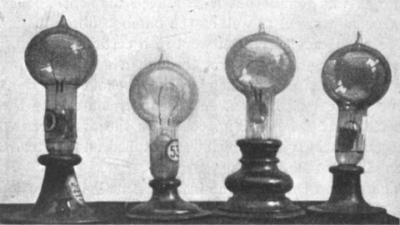
Mention the name Edison, and a bulb flashes in your mind! All of you would have heard that the incandescent electric bulb was invented by Edison. However, it is not exactly true to say that it was Edison who invented the idea of electric lighting. A number of people had worked on this idea before him, and some had even developed some forms of electric lighting. British inventor Humphry Davy had made an electric arc lamp in the early 1800s. In the decades that followed it, there were some other attempts to perfect electric lights, but they were not successful.
What Edison sought to make was an efficient incandescent light bulb that would be commercially practical, and he succeeded. He designed a vacuum bulb in the late 1870s, which was to have a metal filament that shone when heated. Later, Edison decided to use a carbonised filament in the model, getting the idea while absent-mindedly playing with a piece of lampblack. He tried different carbonised materials, starting with cardboard, and eventually decided on bamboo which had long, durable fibres.
Using an improved vacuum pump that effectively removed air from the bulb, Edison was able to give his bulbs a lifetime of approximately 1,200 hours.
Picture Credit : Google




